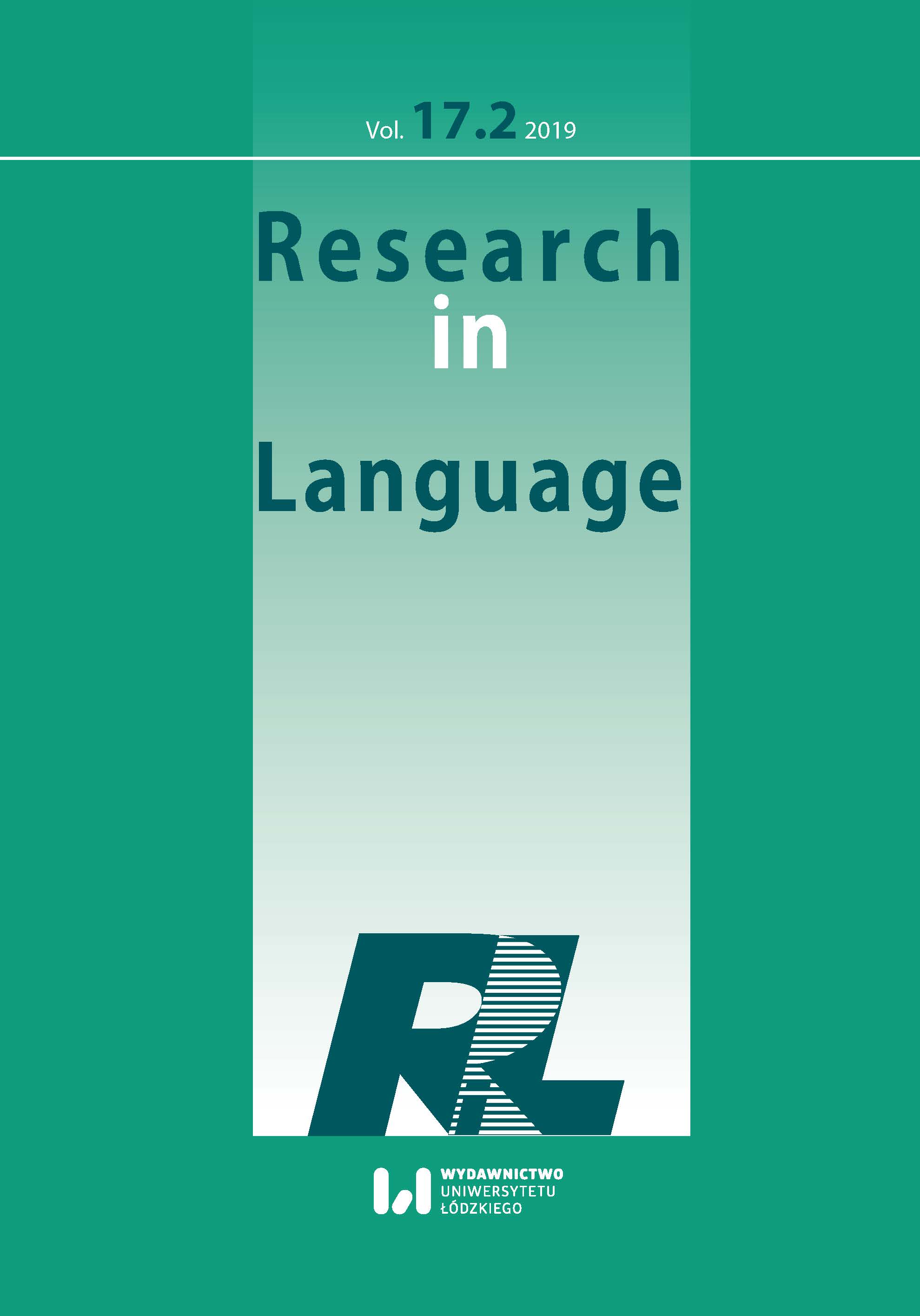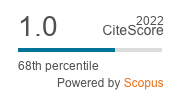Polish Migrant Community in Ireland: the Use of Irish English Slit-t
DOI:
https://doi.org/10.18778/1731-7533.17.2.02Keywords:
migration, Polish migrants, second language use, acculturation, Irish EnglishAbstract
In any migratory context individuals are faced with several challenges as a result of having to live in a different geographical location, function in a different cultural setting and use a different language. The migrants’ use of language plays a crucial role in mediation of their identity, especially in the domain of pronunciation (Kobialka 2016). When non-native users of language adapt their speech to resemble that of the host community, it may suggest their strong identification with the target community (Hammer and Dewaele 2015). This papers focuses on the pronunciation patterns among Polish adult migrants living in the west of Ireland. The aim of the study is to investigate the link between positive attitudes of the migrant community towards Ireland, Irish culture and community, their acculturation strategies and language identity, and the tendency to use one of the most characteristic features of Irish English – slit-t. The theoretical framework includes acculturation theory (Berry 2005), social identity theory (Tajfel and Turner 1987) and language identity (Block 2007). The qualitative and quantitative analysis of data indicates a certain correlation between the use of Irish English slit-t and the participants’ strategies of acculturation, identity and attitudes to the host community.
References
Berry, John Widdup. 1997. Immigration, Acculturation and Adaptation. Applied Psychology: an International Review 46.1. 5-68.
Google Scholar
DOI: https://doi.org/10.1111/j.1464-0597.1997.tb01087.x
Berry, John Widdup. 2006. Contexts of acculturation. In David Lackland Sam and John Widdup Berry (eds.), The Cambridge Handbook of Acculturation Psychology, 24-42.Cambridge: Cambridge University Press.
Google Scholar
Block, David. 2007. Second language identities. London: Continuum International Publishing Group.
Google Scholar
Brown, Douglas. 1994. Principles of language learning and teaching. New Jersey: Prentice Hall Regents.
Google Scholar
Central Statistics Office. 2016. This is Ireland: highlights from census 2011, part I. [Online] Available from: https://www.cso.ie/en/csolatestnews/presspages/2017/census2016summaryresults-part1/ [Accessed on: 27 May 2016]
Google Scholar
Cook, Vivian. 2002. Portraits of the L2 User. Clevedon: Multilingual Matters.
Google Scholar
DOI: https://doi.org/10.21832/9781853595851
Diskin, Chloé. 2016. Standard language ideologies in multicultural Ireland: A Case Study of Polish and Chinese Migrants in Dublin. In Vera Regan, Chloé Diskin and Jennifer Martyn (eds.), Language, Identity and Migration, 287-325.Oxford: Peter Lang.
Google Scholar
Drummond, Rob. 2012. Aspects of identity in second language: ING variation in the speech of Polish migrants living in Manchester, UK. Language Variation and Change 24. 107-133.
Google Scholar
DOI: https://doi.org/10.1017/S0954394512000026
Giles, Howard and Johnson, Patricia. 1987. Ethnolinguistic identity theory; a social psychological approach to language maintenance. International Journal of the Sociology of Language 68. 69- 99.
Google Scholar
DOI: https://doi.org/10.1515/ijsl.1987.68.69
Grabowska, Izabela. 2005. Changes in the international mobility of labour; job migration of Polish nationals to Ireland. Irish Journal of Sociology 14(1). 27-44.
Google Scholar
DOI: https://doi.org/10.1177/079160350501400103
Hammer, Kate and Jean Marc Dewaele. 2015. Acculturation as the key to the ultimate attainment? The case of Poles in the UK. In Fanny Forsberg Lundell and Inge Bartning (eds.), Cultural Migrants and Optimal Language Acquisition. Bristol: Multilingual Matters: 178-202.
Google Scholar
DOI: https://doi.org/10.21832/9781783094042-008
Hickey, Raymond. 2012. Rural and urban Ireland: A question of language? In Irene Gilsenan Nordin and Carmen Zamorano Llena (eds.) Urban and Rural Landscapes in Modern Ireland: Language, Literature and Culture. Oxford: Peter Lang: 17-38.
Google Scholar
Hickey, Raymond. 2008. Feature loss in the 19th century Irish English. In Terttu Nevalainen, Irma Taavitsainen, Päivi Pahta and Minna Korhonen (eds.), The Dynamics of Linguistic Variation: Corpus Evidence on English Past and Present, 229-243.Amsterdam: John Benjamins Publishing.
Google Scholar
DOI: https://doi.org/10.1075/silv.2.19hic
Hickey, Raymond. 2007. Irish English: history and present-day forms. Cambridge: Cambridge University Press.
Google Scholar
DOI: https://doi.org/10.1017/CBO9780511551048
Hickey, Raymond. 1996. Lenition in Irish English. Papers from the International Conference on Language in Ireland. Belfast Working Papers in Language and Linguistics 13. 173-193.
Google Scholar
Hickey, Raymond. 1995. An assessment of language contact in the development of Irish English. In Jacek Fisiak (ed.), Language Change under Contact Conditions. Berlin: Mouton deGruyter. 109-130.
Google Scholar
DOI: https://doi.org/10.1515/9783110885170.109
Hickey, Raymond. 1986. Possible phonological parallels between Irish and Irish English. English World-Wide 7(1). 1-21.
Google Scholar
DOI: https://doi.org/10.1075/eww.7.1.02hic
Jones, Mark Jonathan and Carmen Llamas. 2008. Fricated realisations of /t/ in Dublin and Middlesbrough English: An acoustic study of plosive frication rates and surface fricative contrasts. English Language and Linguistics 12. 419-443.
Google Scholar
DOI: https://doi.org/10.1017/S1360674308002700
Kallen, Jeffrey. 1997. Irish English: context and contact. In Jeffrey Kallen (ed.) Focus on Ireland, 1-33. Amsterdam: John Benjamins.
Google Scholar
DOI: https://doi.org/10.1075/veaw.g21.04kal
Labov, William. 1984. Research methods of the project on linguistic change and variation. In John Baugh and Joel Sherzer, (eds.), Language in use: Readings in sociolinguistics, 28-53. Englewood Cliffs: Prentice Hall.
Google Scholar
Lybeck, Karen. 2002. Cultural identification and second language pronunciation of Americans in Norway. The Modern Language Journal 86(2). 174-191.
Google Scholar
DOI: https://doi.org/10.1111/1540-4781.00143
Milroy, James. 1992. Linguistic variation and change. Oxford: Blackwell.
Google Scholar
Pandeli, Helen, Eska, Joseph Francis, Ball, Martin John and Joan Rahilly. 1997. Problems of phonetic transcription: the case of the Hiberno-English slit-t. Journal of the International Phonetic Association 27. 65-75.
Google Scholar
DOI: https://doi.org/10.1017/S0025100300005430
Schumann, John. 1986. Research on the acculturation model for second language acquisition. Journal of Multilingual and Multicultural Development 7(5). 379-392.
Google Scholar
DOI: https://doi.org/10.1080/01434632.1986.9994254
Waniek-Klimczak, Ewa. 2011. Acculturation strategy and language experience in expert SLA speakers: An exploratory study. Studies in Second Language Learning and Teaching Vol 1(2). 227-246.
Google Scholar
DOI: https://doi.org/10.14746/ssllt.2011.1.2.4
Downloads
Published
How to Cite
Issue
Section
License

This work is licensed under a Creative Commons Attribution-NonCommercial-NoDerivatives 4.0 International License.










